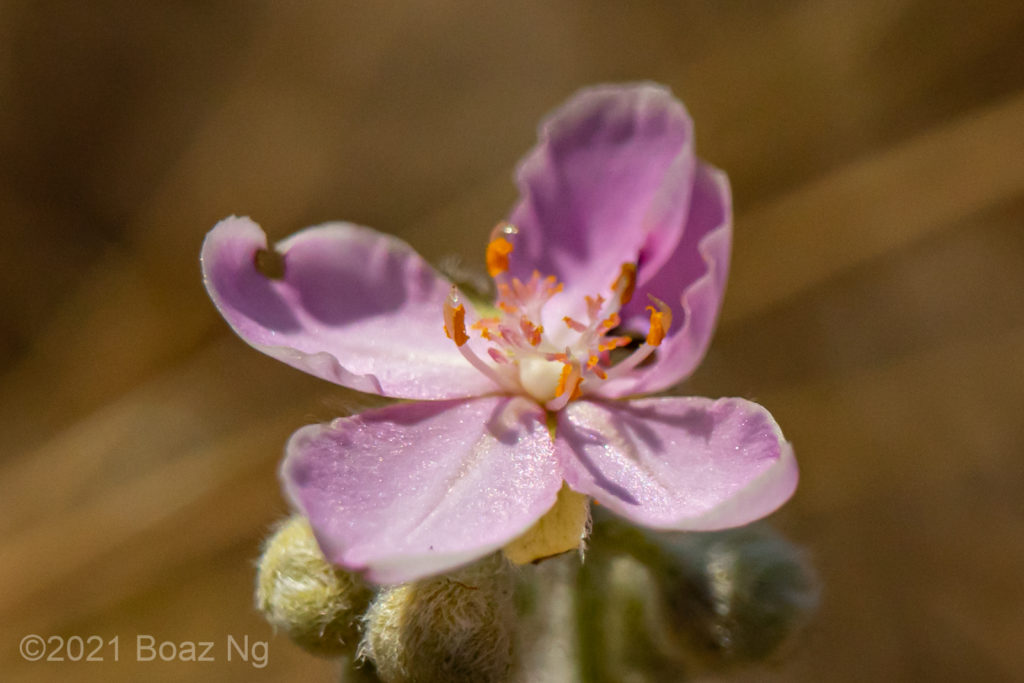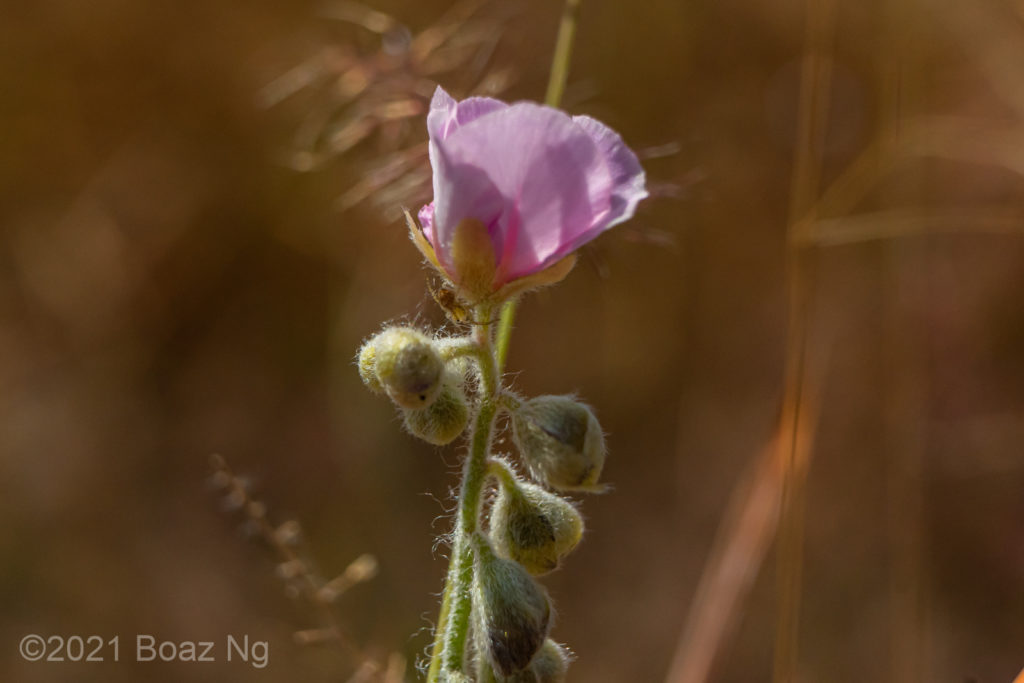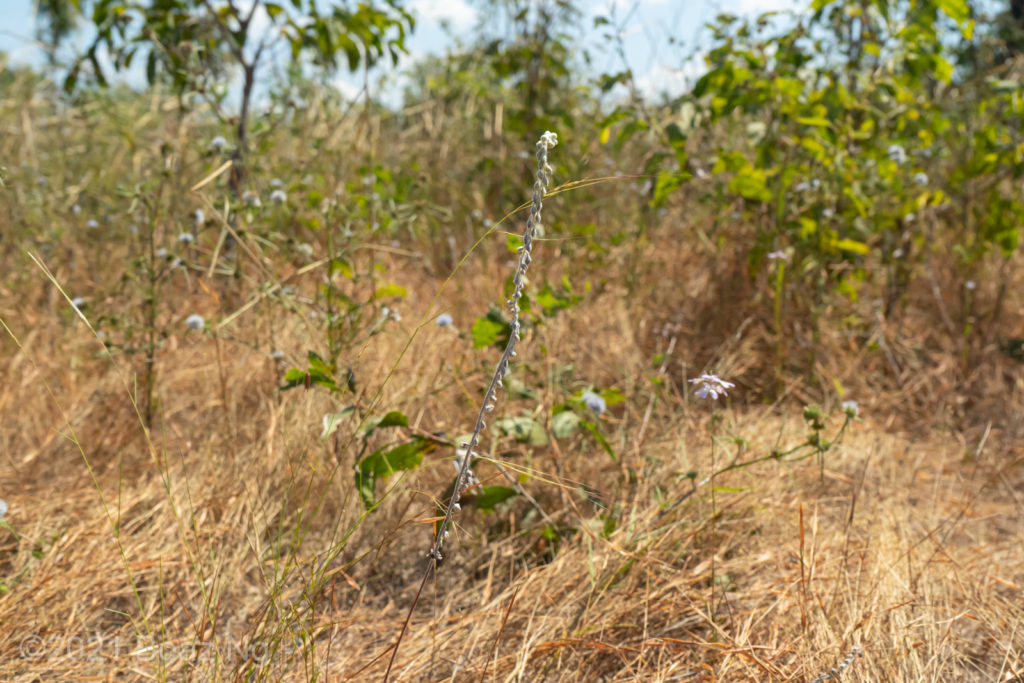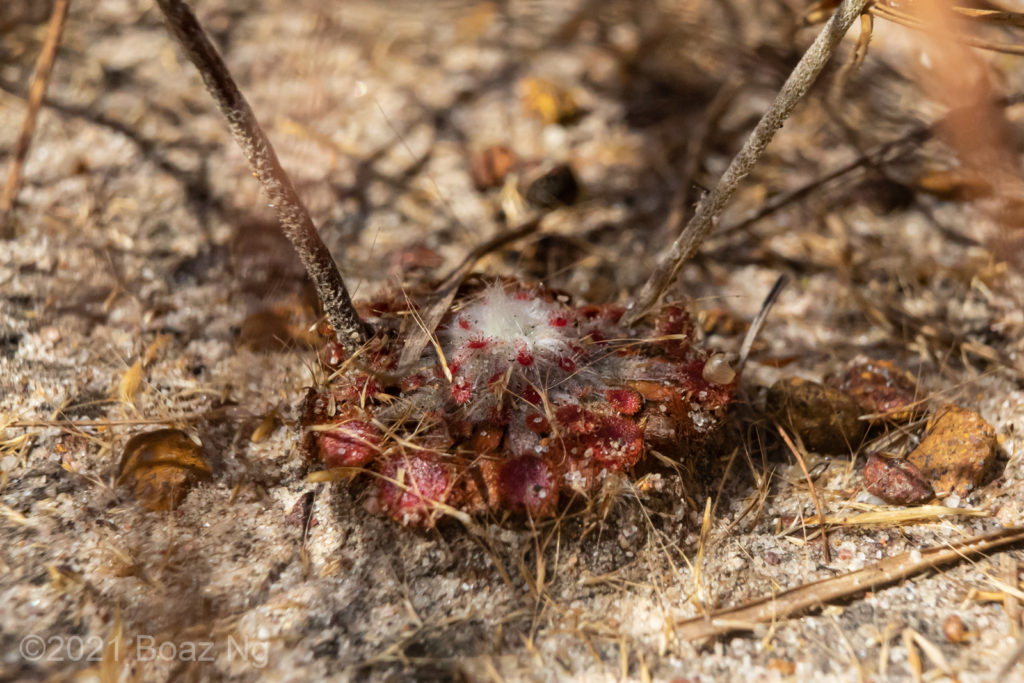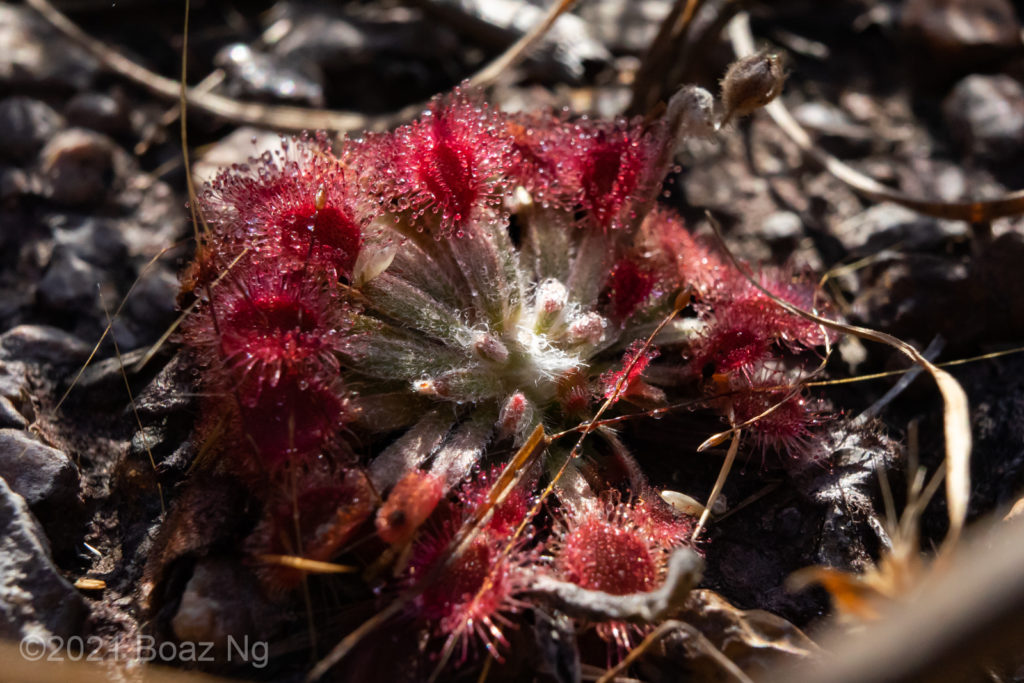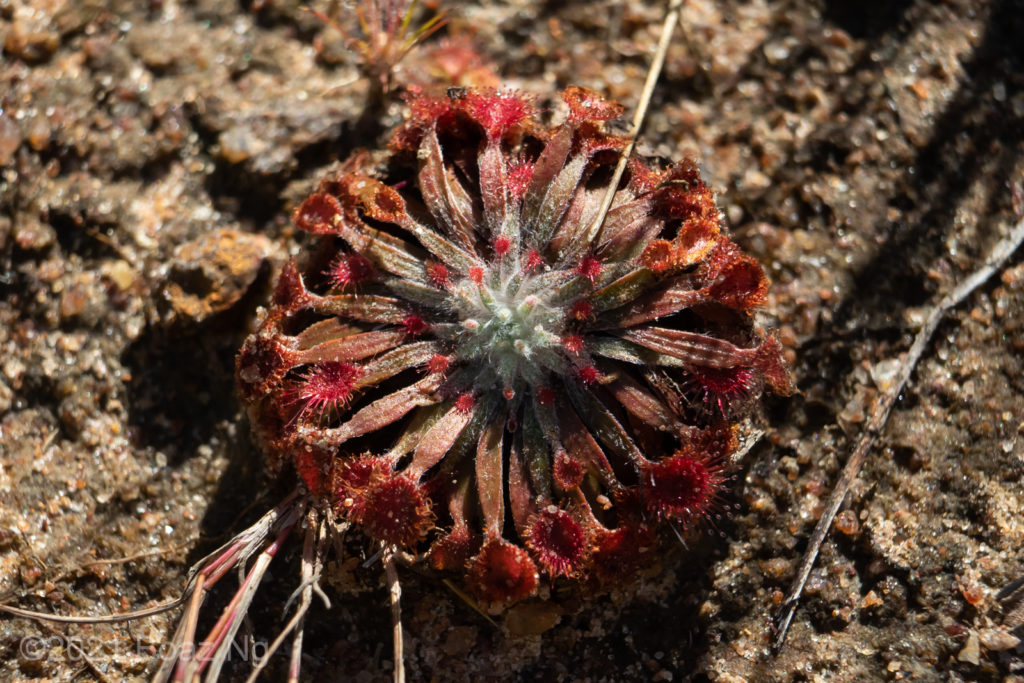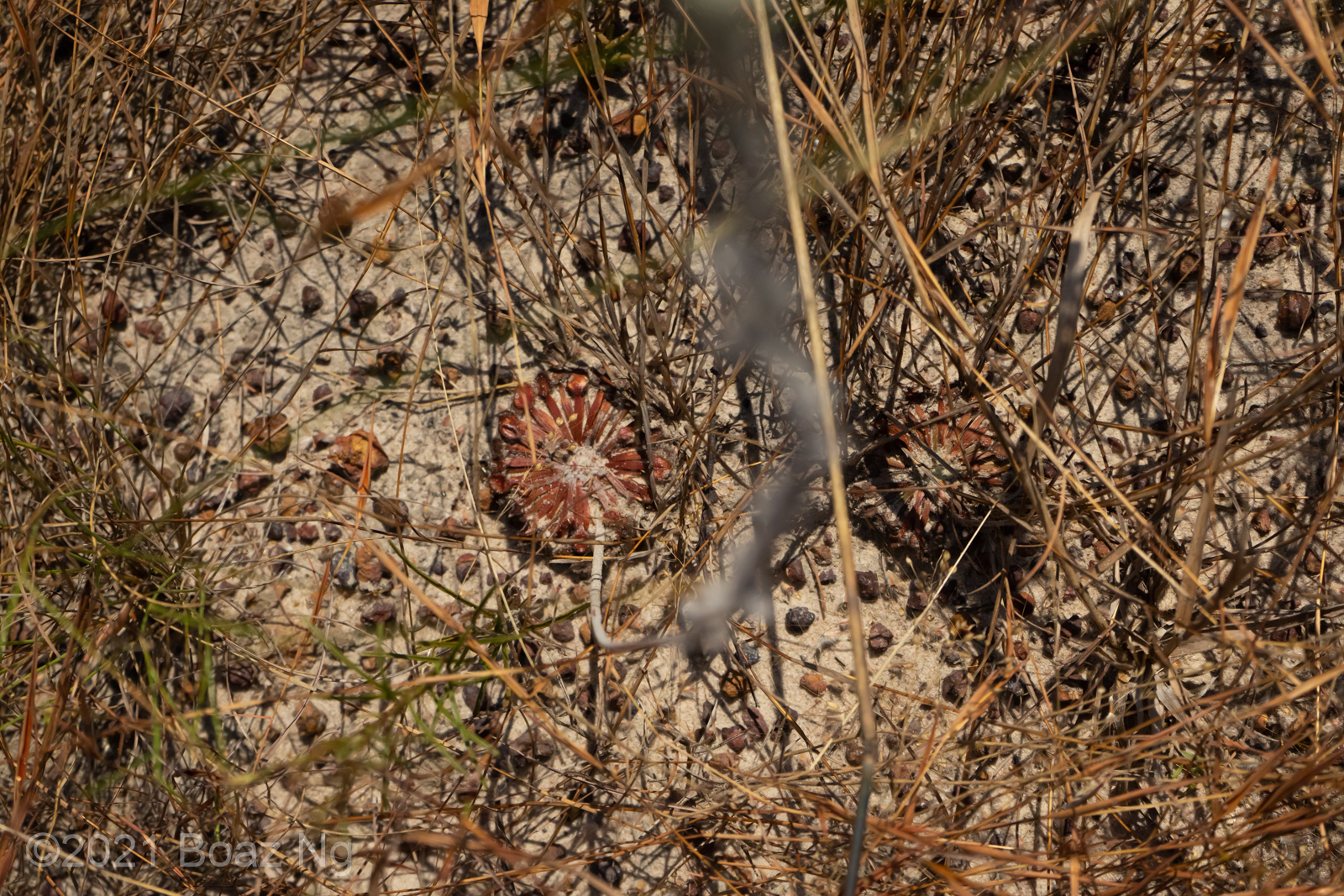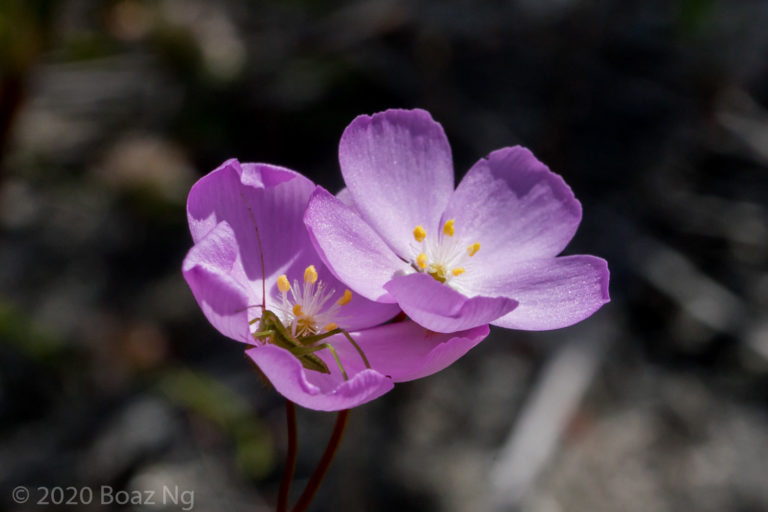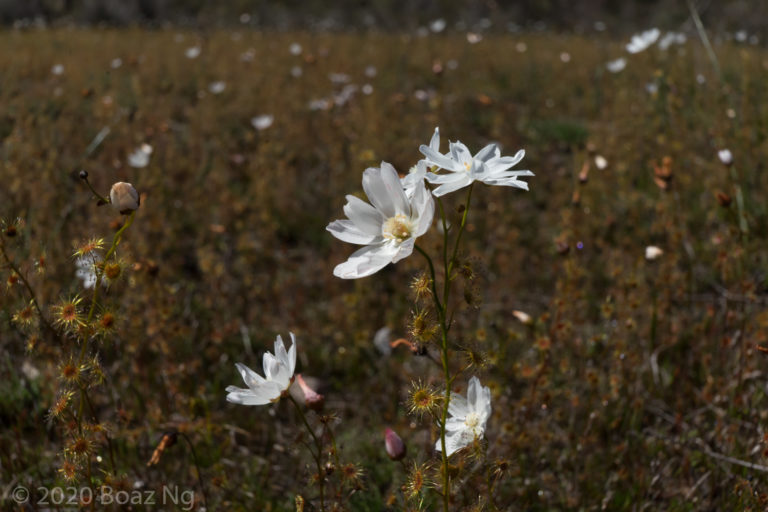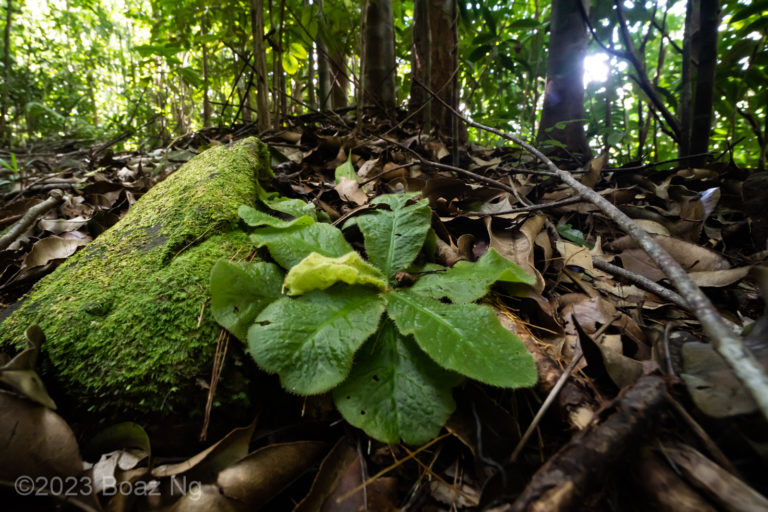Drosera brevicornis is a species of sundew in the section Lasiocephala (petiolaris complex). It is named for the short (brevi) horned (cornis) at the apex of the floral filament.
The species produces small to medium sized rosettes that lie flat on the ground. The petioles are long and dilated and the laminae are oval in shape and relatively large. As with other petiolaris complex sundews, the species looks very different during its active, pre-dormant and dormant growth stages. As the species prepares itself for dormancy, the leaves get hairier and shorter until a densely packed tuft of protective hairs is formed. The flower scape of the species is tall, usually greater than 30 cm and the entire scape is covered with long white hairs. The pedicels are pendulous in fruit. The flowers are white or pink in colour. The filaments of the stamens have a long projection at the terminus, which hooks over the anthers.
D. brevicornis can be found throughout the top end, growing in gravelly substrates. The species flowers towards the end of the wet season and is dormant over the dry season.
The species is very similar to D. darwinensis, and the foliage is practically indistiguishable. A flower scape is needed to identify the two species – D. brevicornis produces long scapes with flowers that have a hooked stamen filament (D. darwinensis produces short scapes with filaments that lack the hooked appendage). The two species are distinguished from other petiolaris complex sundews within its range by its flat rosette.
